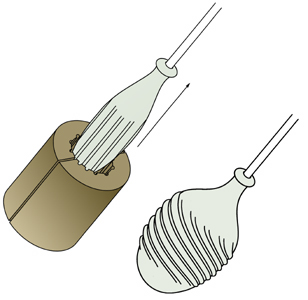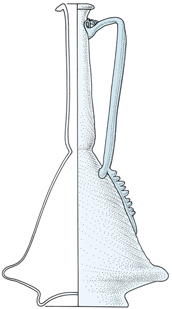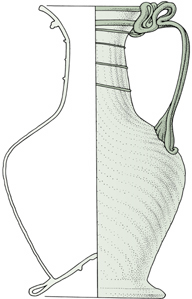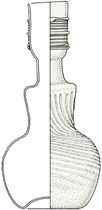The Optic-blowing Technique

The two stages of optic-blowing
"To the men it was a marvel to see the trail flowing from the fire, and the workmen trembling lest it should fall and break. Then he put the lump upon the double points of the pincers." (Mesomedes, The Palatine Anthology XVI.328)
Over the centuries, optic-blowing (blowing into a grooved mold, to create a ribbed decoration) was a popular technique in the Roman glassworking industry, since such a simple mold could be used time and again with just a minimum of renovation.
The glass bulb was only partially inflated while in the mold, then free-blown to full size so that the surface ribbing became stretched and thinned. This vertical patterning of the ribs then could be turned into a spiral, either by a sharp spin of the blow-pipe while the glass was still hot, or by twisting the end of the vessel as its base was being shaped by pincers.
This method of glass manipulation, though it originated centuries earlier, was used a great deal during the first half of the 4th century A.D., to produce wine jugs and beakers of every shape and size.

Bell-shaped wine jug
Ht., 26.1 cm
Late 1st century A.D.

Wine beaker
Ht., 18.0 cm
Early 4th century A.D.

Water jug with fluted handle
Ht., 25.2 cm
Early 4th century A.D.

Flask
Ht., 17.7 cm
Early 6th century A.D.
